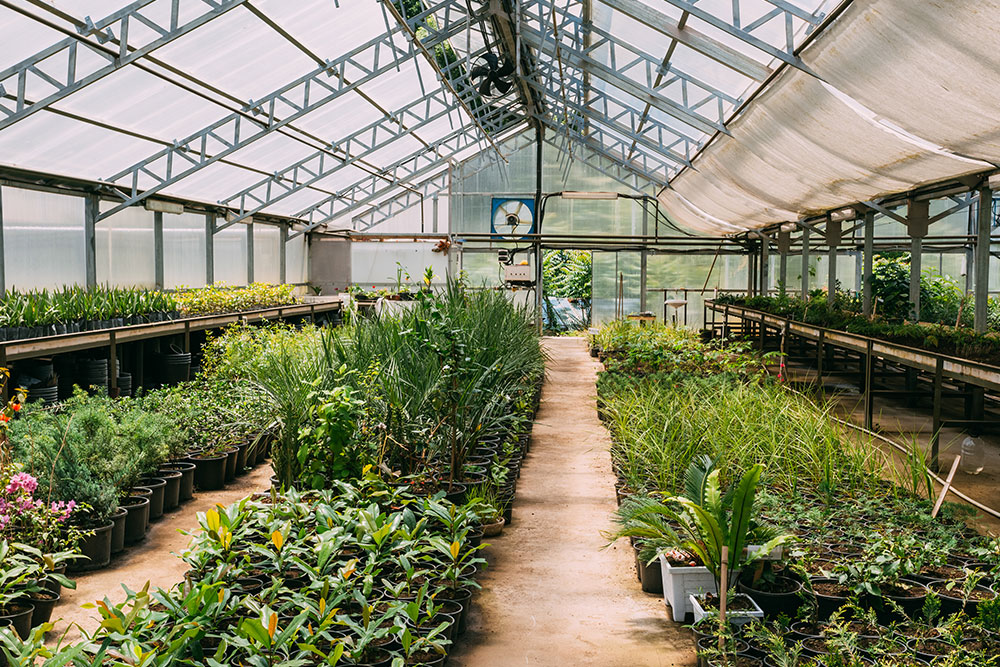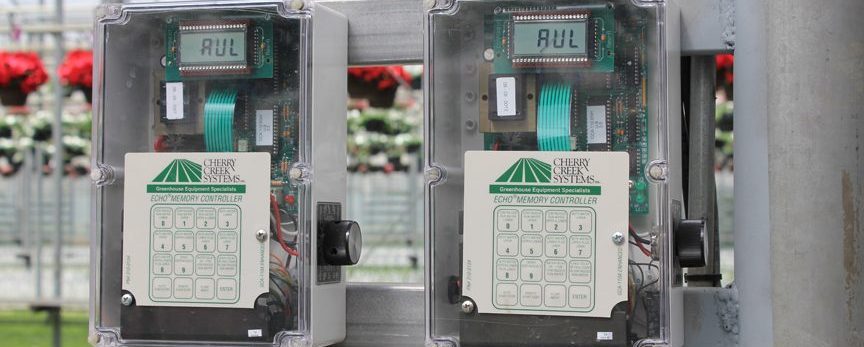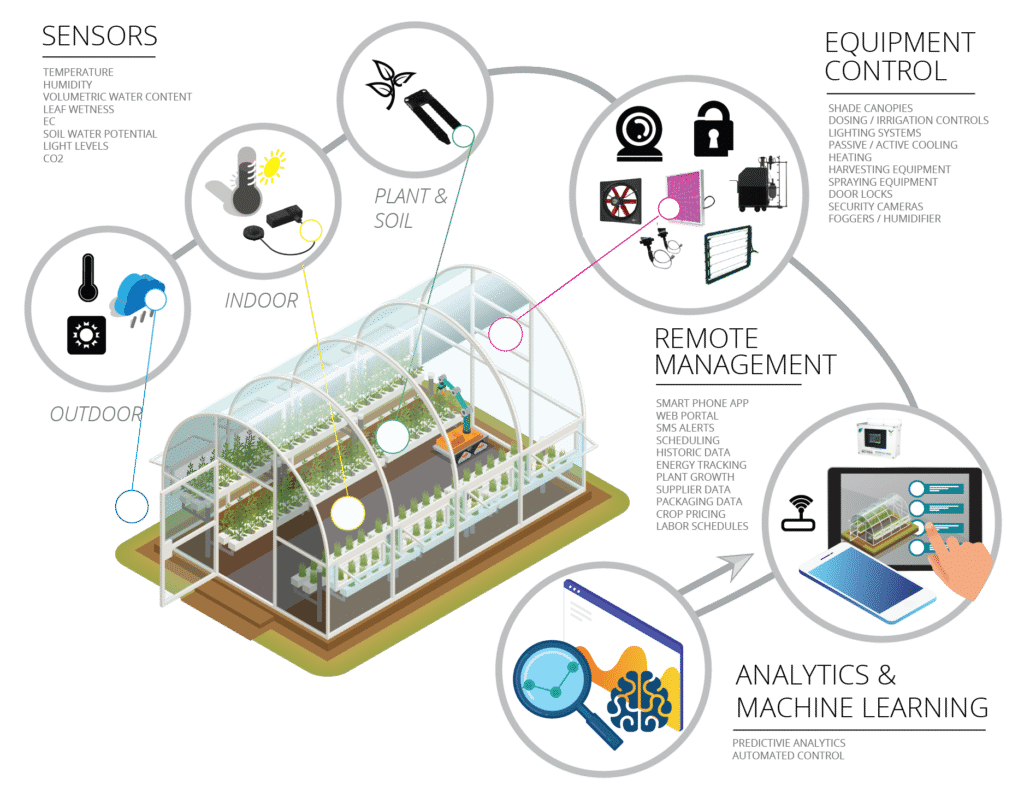A smart greenhouse is a modern way of cultivating plants that uses technology to optimize growth conditions. It is equipped with monitoring and control systems that can regulate the temperature, humidity, light, and other environmental factors that affect plant growth. The smart greenhouse has two compartments: the growing area and the control room. The control room is built to prevent direct contact between the growing area and the outside environment. It is used to house the centralized control hardware and for preparation so that personnel entering the growing area are sterilized first.
The smart greenhouse is designed to provide a microclimate that is conducive to plant growth. It can control the temperature, humidity, light intensity, and soil moisture according to the requirements of the plants. The smart greenhouse is also integrated with an Android operating system, which allows remote control and monitoring of the greenhouse from anywhere.
Smart greenhouses are expected to optimize agricultural yields, reduce production costs, and minimize crop losses. The Internet of Things (IoT) technology in smart greenhouses is used to obtain data needed to determine the needs of the plants, remote monitoring, and decision-making regarding horticultural development.
Benefits
 Maintaining a controlled temperature within a greenhouse environment is crucial. Temperature fluctuations can damage or kill your plants in only a few hours. Remote monitoring systems protect valuable plants from extreme temperature fluctuations. Watch to learn more about these cost-effective systems.
Keeping plants healthy and prosperous requires the best possible growing environment. But staying on top of all environmental changes and equipment statuses or failures can be a challenge. Watch to learn how you can monitor conditions like humidity fluctuations, security breaches, heater, fan, equipment and power failures.
When your plants are at risk, every second counts. The sooner you discover a drop in temperature or an equipment failure, the more inventory you can save. Remote monitoring systems provide real-time updates, so you can take action — fast.
Maintaining a controlled temperature within a greenhouse environment is crucial. Temperature fluctuations can damage or kill your plants in only a few hours. Remote monitoring systems protect valuable plants from extreme temperature fluctuations. Watch to learn more about these cost-effective systems.
Keeping plants healthy and prosperous requires the best possible growing environment. But staying on top of all environmental changes and equipment statuses or failures can be a challenge. Watch to learn how you can monitor conditions like humidity fluctuations, security breaches, heater, fan, equipment and power failures.
When your plants are at risk, every second counts. The sooner you discover a drop in temperature or an equipment failure, the more inventory you can save. Remote monitoring systems provide real-time updates, so you can take action — fast. Controllers
 The controllers are the heart behind your system where your different sensors (soil, outdoor and indoor temperature and humidity) and actuators (like your shade screens and LED lights) are connected to and link to the automation software.
The controllers are the heart behind your system where your different sensors (soil, outdoor and indoor temperature and humidity) and actuators (like your shade screens and LED lights) are connected to and link to the automation software.
- Integrate climate systems
- Integrate LED and light and plant sensors
- Integrate irrigation and dosing systems
Lighting
Using automated LED lighting greenhouse growers can better meet the needs of your plants with real-time and scheduled spectrum and intensity adjustments enabling:


- Improved plant performance and ability to meet year-round growing schedules
- Lower electricity bills
- Increased yields and weights by supplementing natural daylight during shorter winter days or just to daily peaks and valleys due to storms and cloud cover.
- Add additional lighting without increasing electrical infrastructure
- Tweak the colors, size and cold tolerance of plants
Material Handling & Harvesting
 In the face of a changing labor market with a shrinking pool of available farm workers and continued growth of the greenhouse sector across the world growers face a set of problems that robotic systems are stepping up to enable.
In the face of a changing labor market with a shrinking pool of available farm workers and continued growth of the greenhouse sector across the world growers face a set of problems that robotic systems are stepping up to enable.
- More efficient greenhouses due to decreased spacing and optimal space configurations
- Lower work related injuries and workers compensation claims
- Allow for complex crop mixes
- 24 hour crop harvesting schedules

